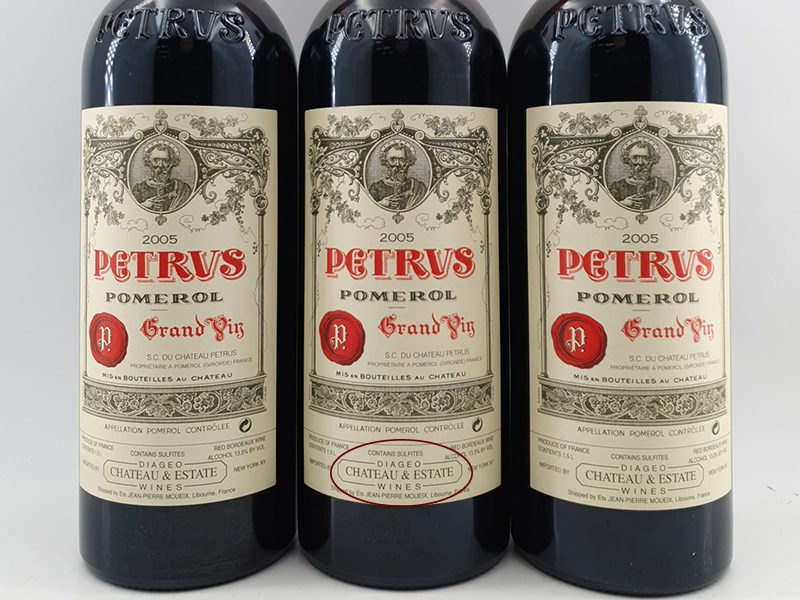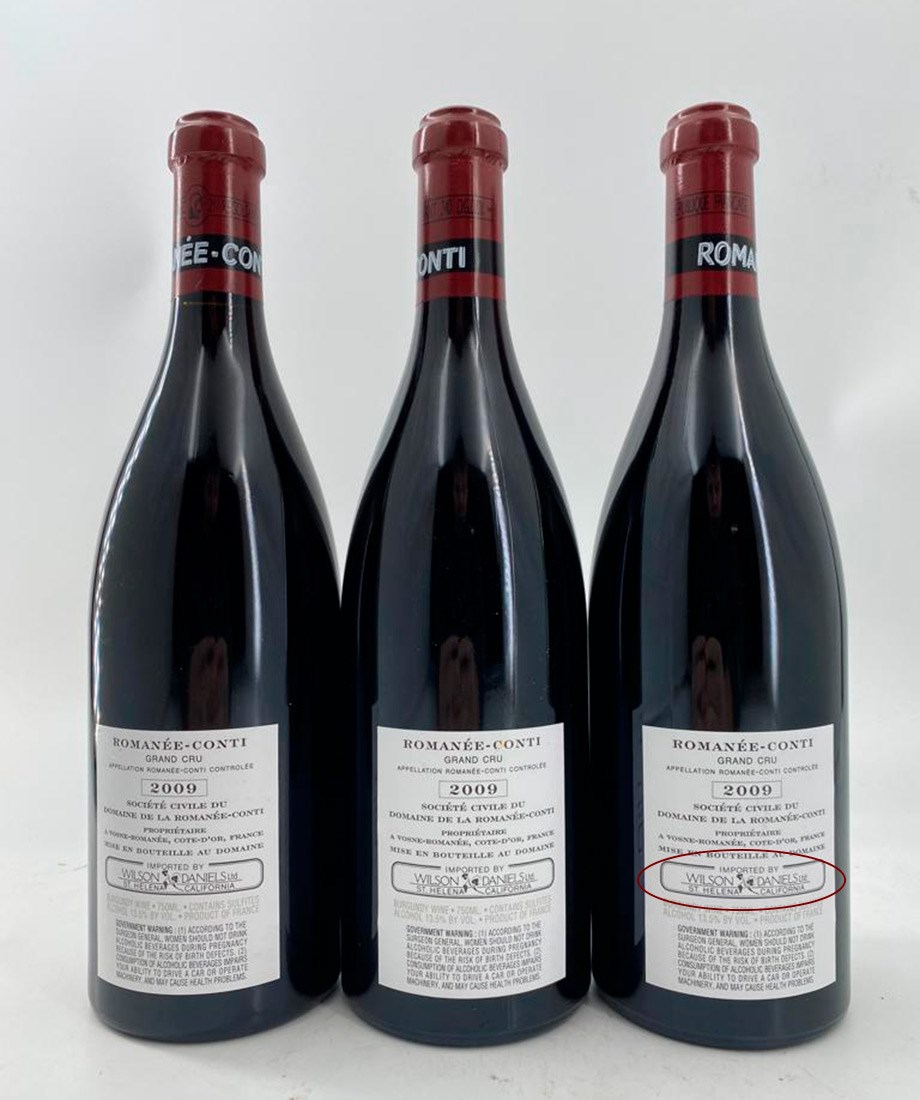Article - RareWine Academy
US Labels On Wine | What Does It Really Mean?
The dreaded quality loss of the past on long-distance transported wines continues to haunt prices... Without reason. Read much more about the meaning of US labels here.
Wine Thirst Across Borders For 8,000 Years
For thousands of years, people have been drinking wine, spreading across borders through religious missions, trade, and colonization. In fact, human thirst for wine can be traced back 8,000 years - and transporting the coveted drops has undoubtedly been an intricate task with massive challenges.
From transporting wine in Kvevri clay vessels to ceramic amphorae and wooden barrels that, after all, weighed significantly less than clay, it was not until the 1820s that we first saw containers that resembled modern wine bottles. And all forms of containers have had fundamental challenges.
First and foremost, air must be kept entirely out of the container to prevent oxidation. The container must be strong enough not to break during transport. The container must also be stored in an environment with a stable temperature so that it doesn't boil and lose its flavor. Historically, transporting the wine that people have desperately craved over time has been fraught with risks of quality loss. And in modern times, when glass bottles were (and still are) the best option, transport still impacts price.
So, the shipping ghost of the past still haunts transported wines, even if it does not matter as much anymore. Read more here.
 Kvevri clay vessel
Kvevri clay vessel
US Label: Why Does It Impact The Price?
French winemakers can mark wines for sale in the US with American labels, referred to as "US-Label." Such a label became a sign for wine connoisseurs, lovers, and collectors that the wines had traveled long under often non-optimal conditions.
If a European wine connoisseur came across a wine with an American label in Europe, it was proof that this particular wine had crossed the Atlantic twice. Obviously, this was an undesirable scenario when you were paying large sums of money for an exclusive wine experience.
An American label, or an Asian one for that matter, in Europe, became synonymous with a wine that had undergone inappropriate treatment, which would probably be reflected in the bottle's quality and flavor. As a result, it was customary for wine connoisseurs and collectors to minimize its value.
Today, however, wine transport is handled entirely differently, with requirements for temperature, humidity, light, and even vibration being met to ensure that the wines arrive at their destination in the best possible condition. Temperature control in particular, is critical, but fortunately, it is also something that modern logistics is very good at handling. Thus, it no longer significantly impacts the wine whether it is transported 100 or 100,000 kilometers - the conditions are the same.
However, the freight ghost of the past still haunts wines with, for example, US labels in Europe, which is why they are now traded at lower prices - even though the quality is the same. In practice, however, this means that US-labelled wines are bought slightly cheaper and resold at a slightly lower price than their EU-labelled counterparts.
Whether the echoes of fear will ever fade, we do not know. But we do see that the price development runs parallel, which is why we at RareWine Invest will always urge an investor to be calm if he or she is concerned about the price difference between the two labels. More on the price development later.
US label: What does it look like?
When the description 'US label' is used, it does not refer to a unique, universal label. In the vast majority of cases, it will refer to information on the label of the bottle or on the box that shows, for example, who the importer is. In the example below, the importer's name appears on the front of the Petrus bottle with the text: "Imported by Diageo Chateau & Estate Wines." Diageo Chateau & Estate Wines Company INC imports wines from Bordeaux and Burgundy and markets them in the US. If you come across a label like this in Europe, you, as a consumer, will know that the bottle has travelled across the Atlantic to return to Europe.
 Petrus with US Label
Petrus with US Label
Parallel Price Development And Sparse Supply
It is common for US-labelled wines to find their way onto this investment platform. That is simply because it is the best wines that are suitable for investment and is also the subject of special features on labels and boxes. And when it comes to the world's very best wines, they come with inherent demand. Likewise, some of the world's very best wines are rare upon release - and it does not really matter if the label says EU or US - you often do not have the freedom to pick and choose between variants.
Although US-labelled wines can be bought slightly cheaper, a parallel price trend can be seen. Back in May 2021, through RareWine Invest, you could invest in 2002 Krug Clos d'Ambonnay with US-label at a price of €2,100. At the same time, the 2002 Krug Clos d'Ambonnay with EU label was priced at €2,300.
The latest valuations for the two wines are €2,500 and €2,750, respectively, an increase of 19.0% (US) and 19.6% (EU). Only around 5,000 bottles of Krug's Clos d'Ambonnay are produced per vintage. It is also essential here whether the quantities can be obtained at all - and not whether the available quantities have an EU or US label.
The same parallel scenario is playing out with the 2017 Domaine de la Romanée Conti Romanée-Conti, which in the summer of 2020 cost €13,600 (US) and €13,750 (EU). Today, both are valued at €19,000, so since the first price point, they have returned 39.7% (US) and 38.2% (EU), respectively. Only around 6,000 bottles of DRC Romanée-Conti are produced per vintage. In this case, the identical price point of €19,000 testifies to the fact that the scarce supply has made the market disregard the US ghost of the past - you have to take what you can get.
And if you extend the retrospective time horizon, the trends look identical. For example, in early 2017, the 2015 Comte Georges de Vogue Musigny Vieilles Vignes was valued at €650 (US), while the EU-labelled price was €700. Today, the wines are valued at €900 (US) and €950 (EU), respectively, so they have increased by 38.5% (US) and 35.7% (EU). Around 20,000 bottles of Vogue Musigny are produced per vintage, and although this amount is higher than the two previous examples, it still counts as Burgundian micro-production.
Common to the above three examples is that prices have all followed each other in parallel. Sometimes with a marginal overweight to US labels, and sometimes vice versa. They also have in common that all three wines are hugely sought after and hard to find. These three examples brilliantly reflect how prices develop on the EU label versus the US label.
 Imported by Wilson Daniels ST. Helena, California
Imported by Wilson Daniels ST. Helena, California
Conclusion: Do Not Fear US Labels
It is not surprising that irrational fear continues to dominate wine prices. Fortunately, this fear has not affected the development of prices, even though they often start at a lower price point. And, as we all know, the most significant price increases tend to occur as volumes disappear from the market - and in the modern age, a wine connoisseur might still let their common sense trump fear and buy the available bottles: US or not.
The fact is that wine transport has come a long way since Kvervri transport and ceramic amphorae were used as wine containers. And so today, transport should only have a marginal impact on price. It does, but whether you are reading this as a wine investor, wine lover, or both, we urge you to stay calm and relax: do not fear US labels.
